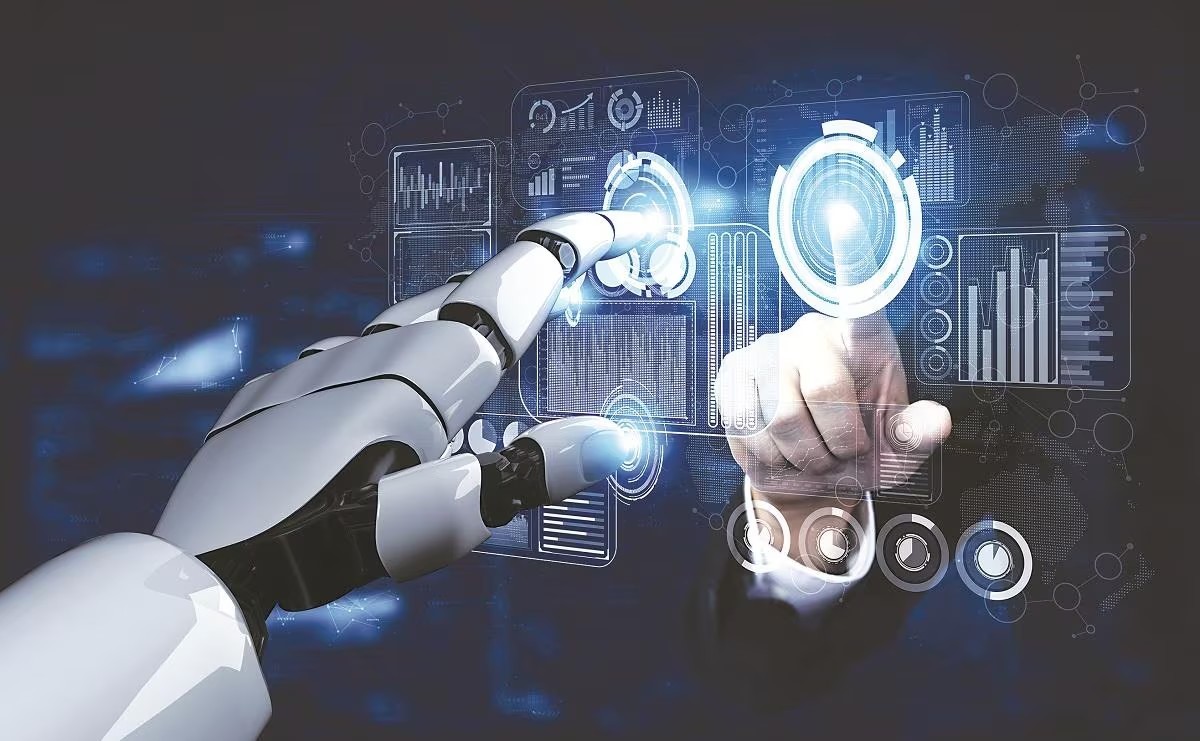India’s AI Race: Challenges, Opportunities, and Roadmap
Syllabus:
GS-3:
Robotics , Artificial Intelligence , Scientific Innovations & Discoveries , IT & Computers
GS -2:
Government Policies & Interventions
Focus:
India is poised to lead the global AI revolution with a young workforce, robust digital infrastructure, and innovative startups. However, hardware dependency, language diversity, and restrictive export controls challenge India’s AI ambitions. Strengthening its hardware ecosystem and fostering sovereign AI models are critical for global competitiveness.
Global AI Developments:
- The US recently launched the Sargate Initiative, investing billions in semiconductor technology to secure a leading position in AI and create 1,00,000 jobs.
- DeepSeek, an open-source AI model developed with less than $10 million and 200 employees, challenged the dominance of proprietary systems like OpenAI, which has 4,500 employees and $6.6 billion in funding.
India’s AI Potential:
- With a young population, a robust Digital Public Infrastructure (DPI), and a growing AI ecosystem, India has the foundation to lead the AI revolution.
- India boasts 2 lakh AI professionals, the largest workforce outside the US, and a 92% AI adoption rate among enterprises.
Understanding Generative AI and Large Language Models (LLMs):
Generative AI:
- Focuses on creating systems capable of producing human-like content.
- Learns from patterns in existing data to generate new, original content.
- Content can be in various forms, such as text, images, music, videos, and more.
- Applications include text completion, image generation, music composition, and video synthesis.
Large Language Models (LLMs):
- A subset of Generative AI models specifically trained to understand and generate human-like text.
- Built using deep learning techniques, particularly neural networks.
- Can generate coherent and contextually relevant text based on a given prompt.
- Capable of performing tasks like translation, summarization, sentiment analysis, and text generation.
- Examples include OpenAI’s GPT (Generative Pre-trained Transformer) and Google’s BERT (Bidirectional Encoder Representations from Transformers).
Key Applications:
- Content creation: Generating articles, marketing content, and creative stories.
- Customer support: Automating responses in chatbots.
- Research assistance: Summarizing large documents and analyzing datasets.
- Language translation: Offering multilingual communication solutions.
Generative AI and LLMs continue to revolutionize the way humans interact with and utilize artificial intelligence across industries.
India’s Existing AI Ecosystem: Building Blocks of Innovation:
Government Support & Startup Ecosystem
- The India AI Mission demonstrates the government’s commitment to AI leadership.
- 240+ Gen AI Startups:
- Sarvam AI: Working on Indian language models.
- Niramai: Detecting early signs of breast cancer using AI.
- SASHINI: Breaking language barriers with support for 22+ languages.
Digital Achievements & Financial Inclusion
- India achieved bank account penetration from 30% to over 80% within seven years by rethinking DPI.
- Monthly UPI transactions worth $568 billion, accounting for 49% of global real-time payments.
Challenges and Strategic Needs for AI Leadership:
Hardware Deficiencies
- GPUs (Graphics Processing Units) are essential for AI, but India faces restrictions due to US export controls under the AI Diffusion Rule.
- These restrictions limit India’s ability to train advanced AI models.
Need for Hardware Sovereignty
- Developing robust AI hardware is necessary for efficiency, scalability, and reliability.
- Investments in AI hardware will:
- Create jobs
- Attract capital
- Spur innovation across industries
Data & Language Diversity
- India’s 22 official languages and numerous dialects require multilingual and multimodal AI models.
- Sovereign AI models based on India-specific datasets are essential to avoid biases.
The Way Forward: Recommendations for India
- Innovate Efficiently
- Adopt a cost-effective and energy-efficient approach similar to ISRO’s strategy of doing more with less.
- Champion Open-Source Ecosystems
- Foster an environment that encourages brilliant engineering and software convergence with computing power.
- Develop Sovereign AI Models
- Build end-to-end AI systems based on Indian datasets to ensure independence and relevance.
- Multilingual AI Models
- Create AI systems that support multiple languages to improve accessibility and inclusivity.
- Strengthen Hardware Capabilities
- India must become a Tier-1 nation for AI hardware development, free from restrictions.
- Adopt a Mission-Driven Approach
- A sense of urgency and a coordinated mission are necessary for India to emerge as an AI leader.
Conclusion: India’s AI Journey and Global Impact
- India’s story has been one of reimagining digital architecture for over a billion people in less than a decade.
- With its strong talent pool, government support, and innovative startups, India has the potential to transform from a service provider to a global AI innovator.
- By focusing on hardware, innovation, and inclusivity, India can become an indispensable player in the AI revolution, shaping the future of technology and global supply chains.
Source: TH
Mains Practice Question:
Q: “India has the potential to emerge as a global AI leader, but challenges such as hardware dependency and multilingual diversity persist.” Discuss the steps India must take to overcome these challenges and leverage its AI ecosystem.




